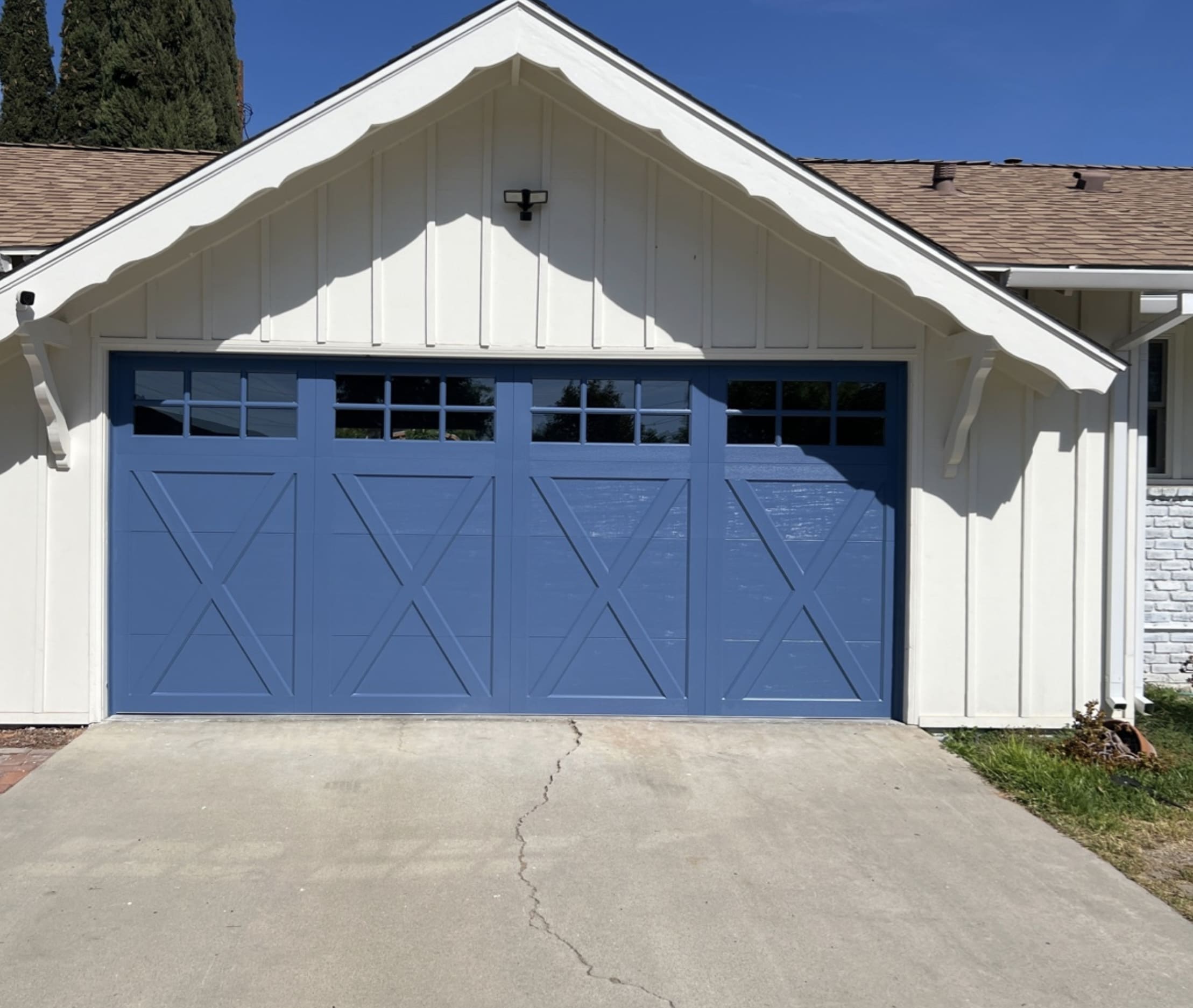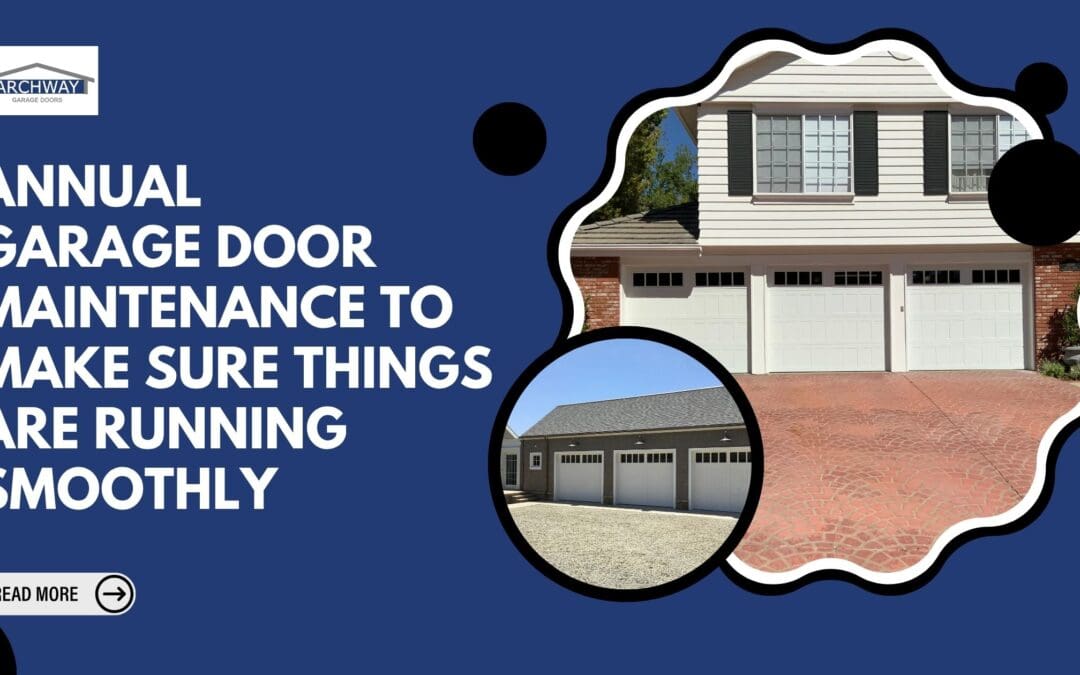- Comprehensive annual garage door maintenance helps prevent unexpected breakdowns, reduces repair costs, and ensures safety and quiet performance.
- Covers all essential checkpoints: springs, rollers, tracks, seals, opener systems, sensors, lubrication, and structural alignment.
- Offers practical homeowner tips, busts common garage door myths, and explains how seasonal care extends the lifespan of your system.
Garage doors don’t ask for much. They go up, they go down, day in and day out, often hundreds of times a month. But behind every smooth motion is a network of moving parts under tension, load, and wear. Springs, rollers, tracks, cables, openers, weather seals, they all carry the load, yet they’re often the most overlooked part of the home.
Annual maintenance isn’t about checking a box. It’s about keeping that system running safely, quietly, and reliably. Whether you’re a homeowner managing a busy household or a contractor overseeing multiple builds, knowing what to expect and what to look for during a yearly check-up can save time, money, and unexpected headaches.
Why Annual Maintenance Matters
It’s easy to ignore a garage door that still works. But the signs of wear don’t always show up dramatically. Springs stretch and weaken over time. Rollers dry out. Tracks collect dust and debris. Weather seals crack in the sun. Openers get sluggish.
Annual maintenance is the difference between catching these problems early and dealing with a stuck door or costly repair later. It’s proactive, not reactive.
Regular upkeep:
- Extends the life of your garage door system
- Prevents noisy operation
- Maintains smooth, consistent performance
- Reduces wear on the opener
- Improves overall safety
A few smart checks once a year can keep the whole system in top shape.
What a Complete Annual Maintenance Includes
Annual garage door maintenance isn’t a one-size-fits-all checklist; it’s a step-by-step process that covers each moving part, structural detail, and safety system. Here’s a closer look at what a typical maintenance visit covers and why each step matters.
Visual Inspection of the Door and Frame
The first step in any maintenance visit is simply looking closely. Cracks, dents, rust, and paint wear can point to deeper problems. A visual inspection covers the door panels, bottom seal, and alignment.
Even minor dents or shifts in panel alignment can lead to air gaps or off-track movement. And if the weather seal at the bottom is brittle or cracked, it’s time for a replacement. A tight seal keeps water, wind, and pests out, especially in coastal or dusty areas.
Hardware Tightening and Adjustment
Vibration from daily use causes screws, bolts, and brackets to loosen gradually. It doesn’t take much for a hinge bolt to start backing out or a bracket to shift just enough to cause misalignment.
A technician systematically tightens all fasteners on the tracks, hinges, brackets, and opener mounts. It’s a simple step, but it prevents rattling, structural strain, and track misalignment.
Spring Condition and Balance Test
The springs carry most of the door’s weight. Whether torsion or extension, they’re under extreme tension and should never be adjusted without training.
An annual check looks for rust, separation between coils, or signs of weakening. More importantly, a balance test is performed by disconnecting the opener and manually lifting the door. If it stays in place halfway up, the balance is correct. If it rises or falls, spring tension is off and needs professional adjustment.
Keeping the door balanced protects the opener from strain and ensures smooth movement.
Roller and Track Inspection
Rollers guide the door along the tracks. Worn, cracked, or noisy rollers can drag, causing jerky motion or louder operation. Tracks may collect dirt or suffer small dents that disrupt the glide.
The rollers are inspected for wear and proper rotation. If they’re nylon, they may need replacement sooner than steel ones. Tracks are wiped clean and checked for bends, rust, or separation from the frame. Realignment or replacement is recommended if the door doesn’t travel evenly.
A clean, aligned track system is essential for smooth door movement and reduced opener strain.
Hinge and Panel Joint Check
The door flexes at its hinge points during every cycle. Hinges should pivot freely and stay firmly bolted to the door panels. Over time, they can loosen or develop cracks.
A professional checks for:
- Loose or missing screws
- Warped or cracked hinge plates
- Uneven panel movement during opening
Replacing a worn hinge is inexpensive and prevents damage to multiple panels.
Opener and Drive System Testing

Openers take on thousands of cycles a year. Over time, drive chains or belts can sag, and motor sensitivity can drift. During annual maintenance, the technician tests the opener’s functionality, checks the chain or belt tension, and verifies that all remotes and wall controls are responsive.
If you’ve ever pressed the remote and waited several seconds before the door responds, or if the door stops halfway, those are signs your opener settings or motor may be drifting out of spec.
They also test the auto-reverse feature by placing a small object in the door’s path. The door should reverse immediately when it makes contact or when the safety beam is interrupted. If it doesn’t, the opener’s force and travel settings are adjusted.
This test ensures not only convenience but also safety, especially in homes with kids or pets.
Sensor Alignment and Functionality
Photo-eye sensors are mounted near the bottom of the door, and they emit an invisible beam. If this beam is blocked, the door won’t close, or it should reverse immediately.
Dust, cobwebs, misalignment, or wire damage can knock sensors out of sync. A technician ensures they are properly aligned, clean, and connected. If necessary, they rewire or replace the units.
This step is critical for preventing accidents and keeping the door up to modern safety standards.
Weather Seal and Threshold Inspection
Heat, humidity, salt air, and UV exposure can crack and shrink the rubber seals around the door. A proper seal keeps rain and insects out and helps maintain indoor temperature.
Technicians inspect the seal along the bottom and sides of the door and replace any worn or brittle sections. They also check the door’s compression against the frame to make sure it’s closing tightly.
Keeping these seals in good shape also protects tools, storage items, and flooring inside the garage.
Lubrication of All Moving Parts
Without proper lubrication, metal-on-metal friction leads to early wear. A technician applies garage-specific lubricant to springs, rollers, hinges, pulleys, and other key moving points.
Not all lubricants are created equal. Products used during professional maintenance are typically silicone- or lithium-based, which reduce friction without attracting dust.
The result: quieter operation and longer component life.
Diagnostic Report and Recommendations
At the end of the maintenance visit, technicians often offer a quick rundown of what they inspected, adjusted, or replaced. If any issues require more extensive work, like a spring replacement or track realignment, they’ll make those recommendations clearly.
It’s also an opportunity to discuss modern upgrades, such as sidemount openers for more ceiling clearance, or insulated door options that help regulate temperature.
Bonus Tip: Don’t hesitate to ask your technician:
- How much life is left in your springs?
- What’s the noise level like, normal or too loud?
- Are your tracks aligned well enough to add insulation?
A good technician will explain things in plain language and help you understand how your door’s performing overall.
What You Can Do Between Visits
While most of the heavy lifting is done during a professional check-up, there are a few simple things homeowners can do throughout the year:
- Keep the area around the door and tracks clean
- Watch and listen during the operation for any unusual sounds
- Gently wipe sensors if the door doesn’t close
- Don’t ignore slower or louder operation, schedule a check
Quick attention to small changes can prevent bigger issues from developing.
Myths About Garage Door Maintenance
Some homeowners skip annual maintenance because of a few common misconceptions. Here’s the truth behind them:
“If it’s working, it’s fine.”
Garage doors don’t usually break without warning, but those signs can be subtle. A slow rise, a creak, or a worn seal can signal a bigger issue around the corner.
“I can do it all myself.”
Cleaning and observing? Sure. But adjusting springs or aligning sensors without training can be dangerous and costly.
“It’s not used that much.”
Even if you don’t use your garage every day, weather exposure, dust buildup, and natural wear still take a toll over time.
Common Issues Caught During Maintenance
Annual maintenance often uncovers small problems before they become expensive ones:
- Sagging springs that no longer support the door’s weight
- Worn rollers that create drag and strain the opener
- Unbalanced doors that drift open or slam shut
- Loose hinges or brackets that misalign the panels
- Cracked weather stripping is letting in moisture or dust
- Unresponsive sensors that fail to stop the door
Catching any one of these early avoids a frustrating service call later.
How Maintenance Saves Money Over Time
It’s not just about avoiding repairs. Annual maintenance improves the long-term value of your garage door system. Replacing a spring or roller on time can prevent the door from derailing, which could damage panels, tracks, and even the opener motor.
In many cases, regular tune-ups help the system last years longer than average, especially in regions with high use or exposure to harsh elements. It’s also easier and less expensive to maintain quiet, smooth performance than to fix damage after it happens.
Key Benefits Beyond Just Operation
Beyond basic function, a well-maintained garage door system can improve your everyday experience in ways that aren’t always obvious.
Safety First
Garage doors are heavy. If a spring snaps or a sensor fails, it can result in serious injury or damage. Annual inspections keep all safety mechanisms in working order.
Quieter Performance
A well-maintained door doesn’t wake up the neighborhood. Lubrication, alignment, and roller condition all factor into how quietly your door operates.
Consistent Access
Preventing last-minute breakdowns means you’re never stuck in or out of your garage. A quick test once a year ensures dependable access.
Efficiency and Protection
Good seals and proper balance help maintain a more comfortable garage temperature and protect stored belongings from dust or water.
Property Value
Curb appeal and functionality both matter to buyers. A quiet, clean, and well-functioning garage door makes a strong first impression.
When to Schedule Annual Maintenance
The best time for maintenance is typically before the start of extreme weather seasons. In warmer regions, spring and early fall are ideal times to check seals, lubricate hardware, and test safety systems.
If your garage is used frequently, stores valuable equipment, or has an opener over five years old, annual visits become even more important.
Do You Use Your Garage Differently?
If your garage doubles as a home gym, workshop, or storage for sensitive items, your door system works harder than average. High-frequency use or climate concerns (like extreme heat or salt air) may warrant two check-ups a year instead of one.
Bonus tip: If you notice condensation, rusting metal tools, or sticking due to seasonal swelling, your door might benefit from a better seal or insulation upgrade.
Don’t Wait for Something to Break
Most garage door problems are preventable with the right care. Yearly maintenance keeps your system running the way it should, smoothly, quietly, and safely. It protects the investment you’ve already made and keeps daily life moving without hiccups.
If it’s been over a year since your last check-up, don’t wait for something to break. Call us at Archway Garage Doors at (805) 578-6015 to schedule your annual maintenance. We’ll make sure your garage door keeps running safely, smoothly, and reliably.

